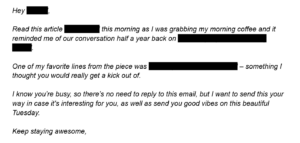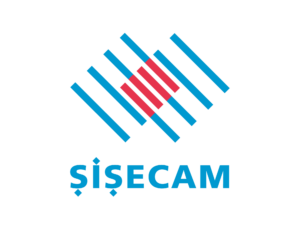Businesses across the globe lose billions of dollars a year to intellectual property theft, costing jobs, damaging economies, and elevating consumer health risks.
Intellectual property is the lifeblood of nearly every business, but the growing dependency on digital technology and file-sending services has made thievery simpler and more common. Businesses need to be deliberate about how they protect their intellectual property.
The consequences of IP theft can be extreme for a company. If your entire business model is based on the training you provide to your customers, your training materials and curriculum become a valuable commodity. When someone steals your training manuals, they can launch a competing business with little to no overhead because they didn’t spend years and dollars developing a training curriculum.
Even if you fight the thieves, you’ll spend countless hours and money on attorneys’ fees, another distraction that takes you away from your core goal of offering the best training to your customers.
This guide will outline the steps you can take with digital rights management to protect valuable commodities and keep them from falling into the wrong hands.
What makes up intellectual property?
You might think of intellectual property as those pieces of your business that can be protected through legal means, such as patents, trademarks, and copyrights, but your intellectual property expands beyond those specific pieces. You certainly want to protect your property through these legal avenues, i.e. patents for any products or designs your company produces; trademarks for logos and branding; and copyrights for creative materials, such as songs, written materials, or software.
When you expand your thinking about intellectual property, these pieces will fall into two general categories — confidential information and proprietary content. The focus of this guide will be on these two areas.
Confidential company information
Since businesses existed, they have held much information confidential, and at one time that might have been as simple as locking up the documents in a filing cabinet. Of course, as businesses become larger and more complex, the need to send and protect information also has grown and transformed.
In the digital age, the types of information that your company needs to send, both internally and externally, continues to expand. Hence, protecting that information becomes a greater challenge.
Types of information you’ll want to protect, including some that fall under the umbrella of needing legal protection, includes:
- Trade secrets: Those processes and practices that give companies a competitive edge and are never meant to be publicized are considered trade secrets. Think of Coca-Cola’s recipe for its signature drink.
- Financial information: This may go beyond internal information such as budgets and salaries. It will include items such as price lists that need to be sent with clients, but not competitors.
- Contracts: This is a two-way street as you need to protect your clients’ contracts as well as those you have with vendors or suppliers.
- Pre-release marketing material: Information that leaks out before your company is ready to go public could cost your competitive edge as it alerts your competitors of what is coming.
Proprietary content
Proprietary content is defined as materials your company produces, either in-house or through a contract agency. Content that is designed to be sent to staff and/or customers, but not the general public nor your competitors. Examples include:
Training materials and manuals
Significant staff time and effort goes into developing training materials and manuals, whether for your own products or sourced products. These materials also pass back and forth through the ether as colleagues collaborate on drafts before they reach the final product. The value becomes in the course and the training materials themselves, and you could face significant loss if someone steals your materials to set up a competing course.
E-books and reports
Again, a great deal of time (and money) goes into the research and writing of e-books and reports. Whether they are given to potential customers as an incentive to gain information or sold through contracts or subscriptions, these materials are sometimes sent illegally by recipients. For companies that rely on the sales of their research reports, which can cost thousands of dollars, sharing amounts to theft. Their research might have a limited but lucrative audience, so any free sharing of the reports means a potentially significant loss of revenue for the company.
Videos, audio, and images
Marketing materials in development such as images, audio recordings, or videos leaked prematurely could damage the launch of a company’s product. Imagine if competitors got a look at a new iPhone model six months before its unveil, they could steal features and dampen demand when the phone is ready to launch. The same could apply to books and other written materials, as even a title leak could hint at the direction your company is headed.
How companies protect intellectual property
Companies deploy many means to protect intellectual property, with varying degrees of success.
Proprietary content typically is protected by copyright, but that can have its own drawbacks. First, you’ll only copyright the final product, so if it leaks out during development, it cannot be protected. Second, copyrights are generally defended through lawsuits against the offending party, which can become costly for legal fees and a drawn-out process that won’t necessarily undo all damages to your company.
Companies attempt to protect their confidential information through confidentiality agreements with employees, directors, and clients. These agreements can only be prosecuted through lawsuits after the damage is done. However, enforcement of such agreements can be lax in many other countries.
Companies also try to place basic protections on some documents, such as passwords on pdf or watermarks on images. These efforts can be easily circumvented. Passwords can be leaked or shared and can easily be removed once someone gains access to the document. Once access is gained to a pdf, it cannot be revoked. Watermarks can also easily be edited out with basic photo editors.
How does DRM help protect intellectual property?
Digital rights management (DRM) offers the strongest control methods to protect your proprietary information and confidential company information. DRM prevents unauthorized use, sharing, and copying of digital content because you are the one who sets the controls.
DRM protects all sorts of intellectual property, such as market research, eBooks, training materials, modules, reports, and other confidential documents. Restrictions can be applied to a variety of digital documents, such as PDF files, MS Office documents, images, videos, and more.
Additionally, DRM allows you to set up secure storage and distribution between collaborators during the content production process so they can work together without allowing the material to sneak outside the authorized group.
DRM also protects revenue streams because even users who purchase access to documents such as eBooks or research reports are not allowed to print, copy or share the documents.
What’s so good about DRM
The ultimate advantage of digital rights management is control. You control who has access to your documents. You control how they use the documents while accessing them. You control when they no longer have access to your documents. It’s as if your documents are locked up in a safe behind your desk. The only people who get access to what’s in your safe are the people who walk through the door and get your permission to see the documents. The documents stay in your office, and you watch what the people are doing with the documents.
That pretty much sums up the rest of the pros:
- You determine the documents each individual can have access to.
- You place restrictions on what they can do with the content, such as blocking copying and sharing.
- You can allow limited printing or no printing, and choose whether or not they can download your files.
- You can monitor what individuals are doing with your content with document analytics features in advanced DRM solutions.
What’s the catch?
Digital rights management systems have been around for a long time, but some of their drawbacks have prevented them from gaining a strong foothold in the business world. The issues with these systems have been:
- Not being simple enough for senders or recipients. Data management is not something front-end or back-end users want to spend a great deal of time on.
- Requiring recipients to download software packages or apps to access the documents.
- Requiring recipients to take too many steps or give up some of their own data to access files.
- Being able to support one file format only (e.g. video, audio, e-book, pdf), limiting senders’ options.
- Being too expensive for the sender to acquire.
Select the right DRM: factors to consider
Once you determine that DRM is a good investment for your business, several factors will influence how you choose the correct DRM system to meet your needs:
Who is your target audience?
A primary consideration will involve who you need to share your company’s secret information with. Will the sharing be limited to staff alone? Will you be sharing with directors and potential investors? Will you have to share data with customers?
If your target is only towards staff, an on-premise system with special software could be possible as employees expect to work within a company’s operating system. Such a system might be easier to protect from outside penetrations, such as hackers.
However, if your target is anyone outside the confines of the company walls such as directors, investors, or customers, then you should consider a web-based solution that requires zero installations and minimal steps to access files.
What are your current resources?
Do you have the staff and resources to handle a complex, on-premise solution? Can your IT staff handle another internal software system and provide fast and efficient support for your file recipients?
Will your staff work with a complex system to manage and monitor access? Or is their time better spent focusing on your business?
A web-based system backed by a full-time DRM provider can handle these tasks without further burden on your staff.
What is your budget?
DRM prices can range from free to thousands of dollars per year. On-premise systems typically require a large up-front investment in both hardware and software, plus setup and training time. They can also be costly to upgrade.
Web-based systems are paid through affordable monthly or annual fees that can easily be incorporated into your budget. As there is no costly hardware or software to install, you can start a free trial to determine whether or not the DRM fits your needs.
Going beyond DRM: how Digify can help
Digify is unlike any other traditional DRM software. It addresses all the cons with a web-based, all-in-one integrated DRM solution and offers ease of use for your company and recipients.
With Digify, you get a powerful system that supports many file types, and features such as automated watermarking and screen shield to prevent screen recordings. Get customers to agree to your terms of service by simply clicking “Yes” before they open your files. Track and analyze how recipients are interacting with your files with their advanced analytics features.
Companies such as Allakando and RTD Learning trust Digify to protect their intellectual property. Why shouldn’t you?
Sign up today for a free 7-day no-obligation trial to learn how Digify can offer the perfect solution to your digital document protection needs.








